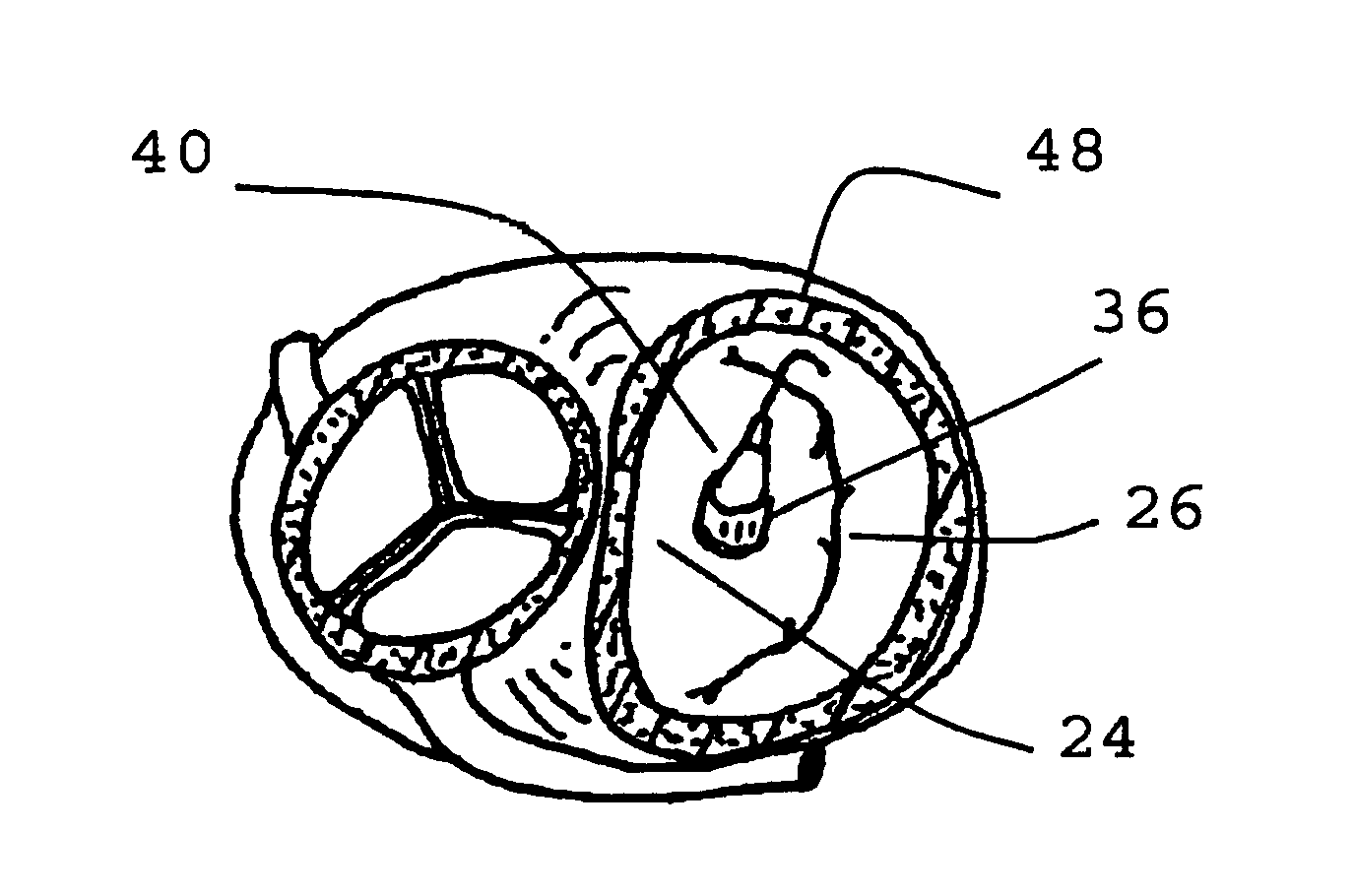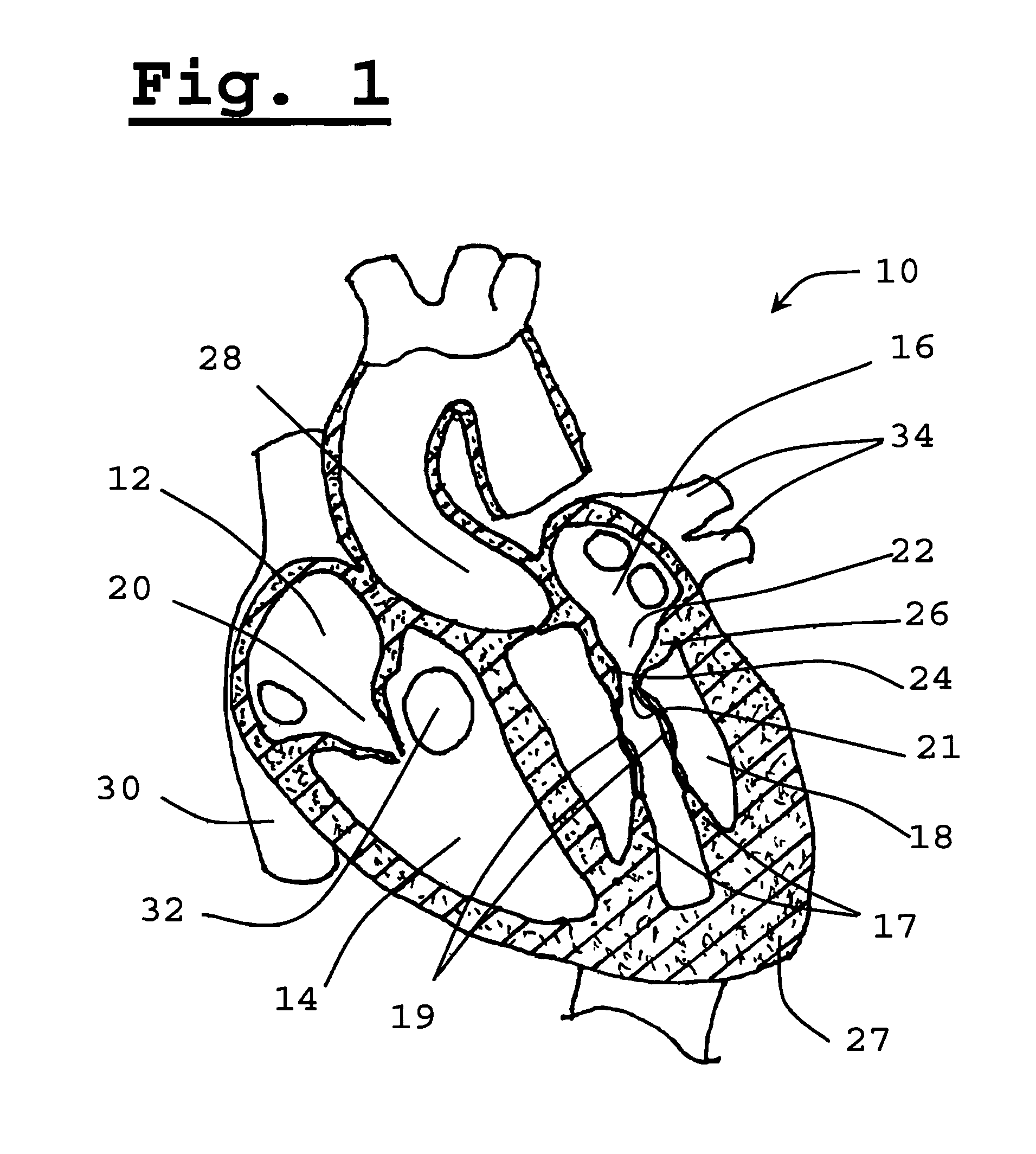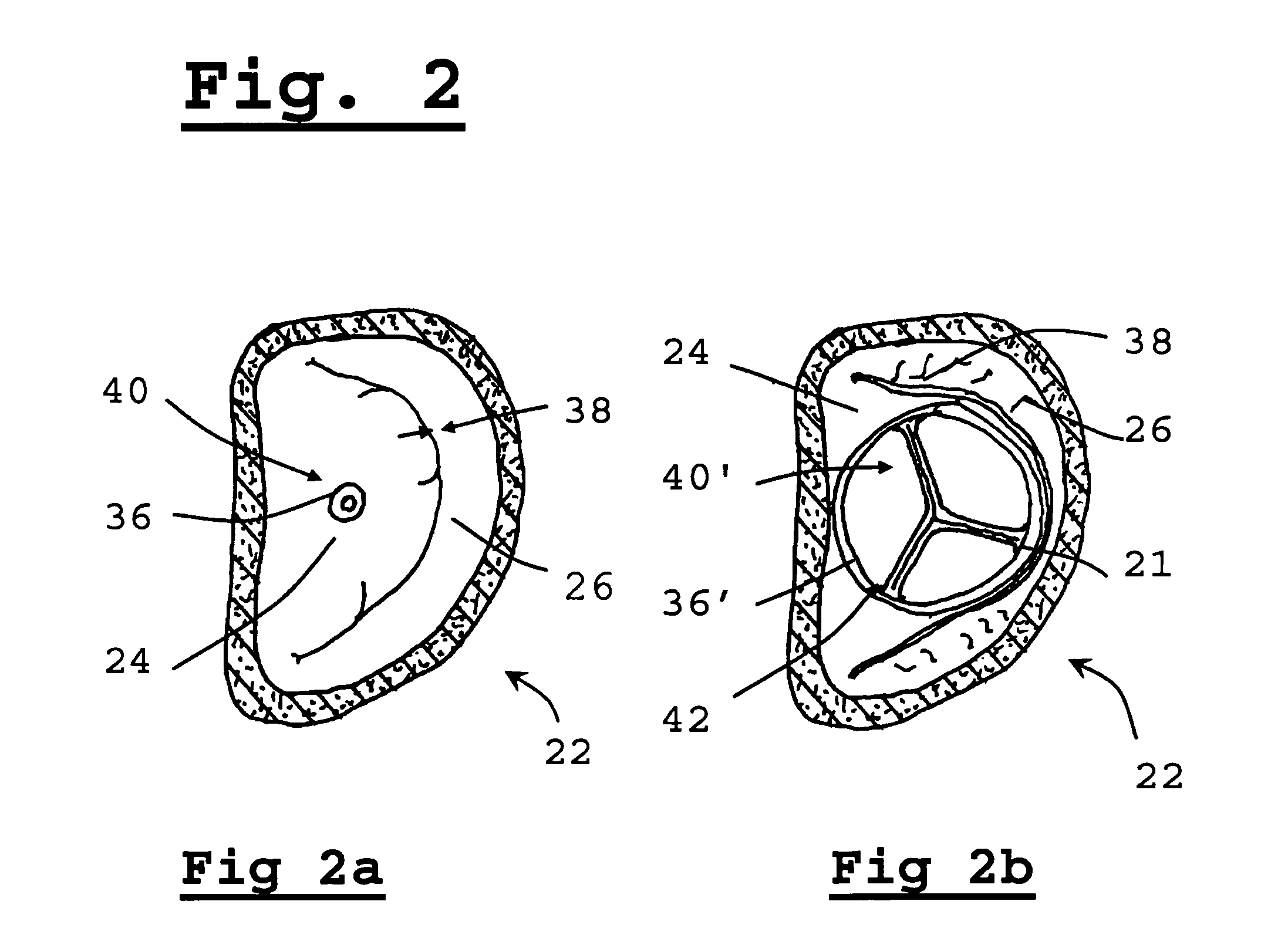Method for implanting prosthetic valve
a prosthetic valve and implanting technology, applied in the field of methods and devices for treating dysfunctional mitral valves, can solve the problems of congenital abnormalities or destruction of mitral valves, valves to be repaired or replaced, and may have severe physiological consequences
- Summary
- Abstract
- Description
- Claims
- Application Information
AI Technical Summary
Benefits of technology
Problems solved by technology
Method used
Image
Examples
Embodiment Construction
[0069]The present invention relates to a method for implanting a prosthetic valve apparatus in a novel and unexpected location. In this manner, the function of a prosthetic mitral valve is provided by the prosthetic valve and the native dysfunctional valve is voided, thereby avoiding paravalvular leakage. The method takes advantage of the special structural features of the tissue of the native leaflets and annulus of the mitral valve to keep the valve secured in place. The anterior leaflet extends across the annulus, which is an area of heart wall tissue at the junction of the atrial and ventricular walls that is relatively fibrous and significantly stronger than leaflet tissue. It provides structural support for the prosthetic valve and prevents its detachment from the novel orifice. It will be noted that the free edge of the valve leaflet has a reinforced, sinewy structure that is significantly stronger than central portions of the leaflet.
[0070]The approach of the invention is in...
PUM
 Login to View More
Login to View More Abstract
Description
Claims
Application Information
 Login to View More
Login to View More - R&D
- Intellectual Property
- Life Sciences
- Materials
- Tech Scout
- Unparalleled Data Quality
- Higher Quality Content
- 60% Fewer Hallucinations
Browse by: Latest US Patents, China's latest patents, Technical Efficacy Thesaurus, Application Domain, Technology Topic, Popular Technical Reports.
© 2025 PatSnap. All rights reserved.Legal|Privacy policy|Modern Slavery Act Transparency Statement|Sitemap|About US| Contact US: help@patsnap.com



